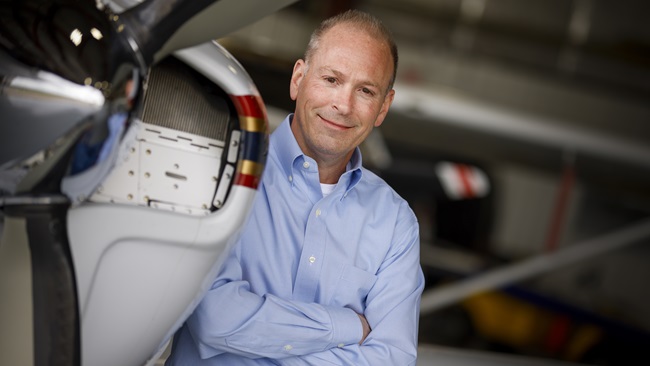Harrelson posts unofficial world speed record
Westbound earthrounder lands Lancair IV in California with time to spare
Westbound world speed record-seeker Bill Harrelson safely landed his modified Lancair IV at California’s Ontario International Airport December 15 at 9:21 p.m. Pacific time after completing a grueling earthrounding flight to unofficially shatter Max Conrad’s 58-year-old weight-class aviation record with 19 hours, 28 minutes to spare.
Harrelson wore an ear-to-ear grin as he exited N6ZQ, a composite aircraft that he built with his wife Sue—who is also a pilot—and he celebrated with well-wishers and a fellow earthrounder on the Guardian Jet Center FBO ramp, close to where the five-leg marathon began December 8.
The original starting point was supposed to be in Florida on December 5, but mechanical problems forced several restarts. An engine issue led to the first unscheduled landing, in Texas. Harrelson then continued toward Hawaii but turned back to California twice: once for an ignition problem causing the single-engine aircraft’s Continental IO-550 engine to run rough, and again when the airplane’s long-range radio malfunctioned.
Harrelson developed a new strategy by moving the starting point to the West Coast, using Ontario’s 10,200-foot-long runway to accommodate the extra weight that 361 gallons of tankered fuel required.
After two false starts, Harrelson successfully flew to Hawaii December 8 in 13 hours, 7 minutes. The initial leg of the world speed record attempt was also its shortest and a good warmup for his next mission.
What followed was a massive overwater flight of 32 hours, 10 minutes, from Honolulu, Hawaii, to Jakarta, Indonesia, which began December 9.
The third leg, from Jakarta to Cape Town, South Africa, was accomplished in 28 hours, 41 minutes. The fourth flight was another nearly 32-hour jaunt, with 31 hours, 42 minutes, logged between Cape Town and San Juan, Puerto Rico.
With the end in sight, Harrelson needed an overall average speed of 108.4 knots to beat the 1961 record set by Conrad in a Piper PA–23 Aztec twin.
“Bill is smoking it!” his ground crew wrote in a blog documenting the flights after the pilot took off from Puerto Rico.
He planned to cross part of the Atlantic Ocean and the U.S. mainland in about 15 hours, but brutal headwinds were predicted. “He has stayed at 10,000' for most of this flight to fly as fast as possible into the wind,” they wrote. “He'll have to climb to go over the pass into Ontario. At this rate, he may be on the ground as soon 9:30 Pacific Time. Wow! Go Bill!”
During the last leg Harrelson was hammered with “mountain wave and turbulence from West Texas to Arizona,” his crew noted. After another 16 hours, 10 minutes aloft, Harrelson unofficially emerged victorious with the weight-class speed record safely tucked away in his logbooks.
Harrelson already holds weight-class distance and endurance records as well as the fastest flight around the world crossing both poles.
“You look at the endurance, and going over both poles in both directions, and you can’t comprehend the whole effort because it’s so unique,” explained Eichhorn.“The thing I love about Bill Harrelson is that I can joke with him and tell him, ‘I’m going to take my Bonanza and try to beat your record’ and he would be 100 percent supportive. He is a remarkable individual and as humble as they come.”
In the coming months the results will be analyzed by members of the National Aeronautic Association, the U.S. branch of the Fédération Aéronautique Internationale governing body.





